Pruning yews: top tips for getting your hedges, topiary, and trees in shape
By pruning yews correctly, you can create all sorts of neat and structural shapes in your backyard – our guide explains how to do it

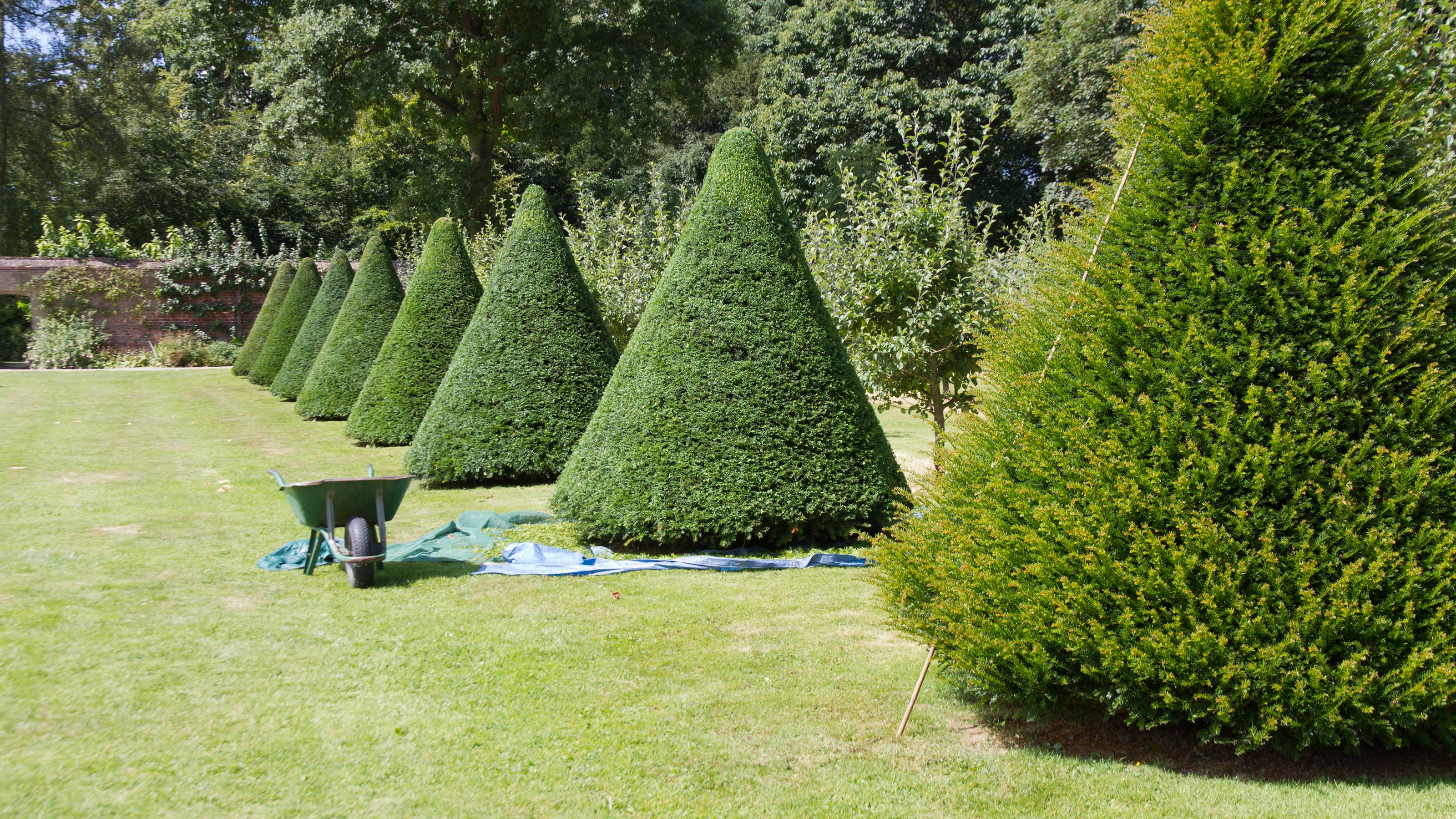
You'll need the lowdown on pruning yews if you've got one or more of these fabulous plants in your garden – and that's where we can help.
Yews are tough and long-lasting, with the oldest over hundreds of years old. They are often seen as magnificent specimen trees, casting cool shade and providing homes and food for birds and other wildlife. But, these evergreens are also brilliant for creating dense hedging or topiary and are commonplace in the gardens of stately homes, from spectacular cloud-pruned features to hedge mazes.
However you want to use a yew in your plot, you'll want to keep it looking smart and shapely, which means a spot of pruning is often in order. And the good news is, pruning yews isn't too tricky, particularly if you're creating a dense hedge. They are forgiving plants and will quickly regrow from both old and new wood, unlike most other conifers.
Just bear in mind, when planting yews in your garden, that they are extremely poisonous. So, if you're looking for a hedging plant that is more pet- and family-friendly, you may wish to choose an alternative.
Pruning yews as hedges
'Yews are great for hedges, due to their tight, evergreen foliage and low-maintenance nature,' says expert arborist Ned Cromack. Because of the dense appearance, they are particularly useful if you're looking to add garden screening for privacy to the borders of your plot, or for breaking up different outdoor 'rooms'.
Pruning them at least once a year will keep their appearance neat, Ned explains, but for a really formal result, you may wish to prune them twice annually. The best time to do so is at the end of summer to early autumn, which will give them time to harden off before hard frosts set in and will help them maintain a crisp appearance right the way through to the following year (yews slow down their growth through the colder months). If you're pruning your yew hedge twice, do the second prune in late spring.
The pruning itself is simply a matter of taking off the edge of the foliage to create a 'wall', using a hedge trimmer. Each cut will stimulate side shoots to develop, resulting in a bushier appearance. When trimming the sides of your hedge, Monty Don of Gardeners' World suggests pruning the higher section slightly narrower than the bottom – this allows plenty of sunlight to get to the bottom of the hedge which will encourage it to grow nice and thick. Leave the top of the hedge until it has grown to the eventual height you want.
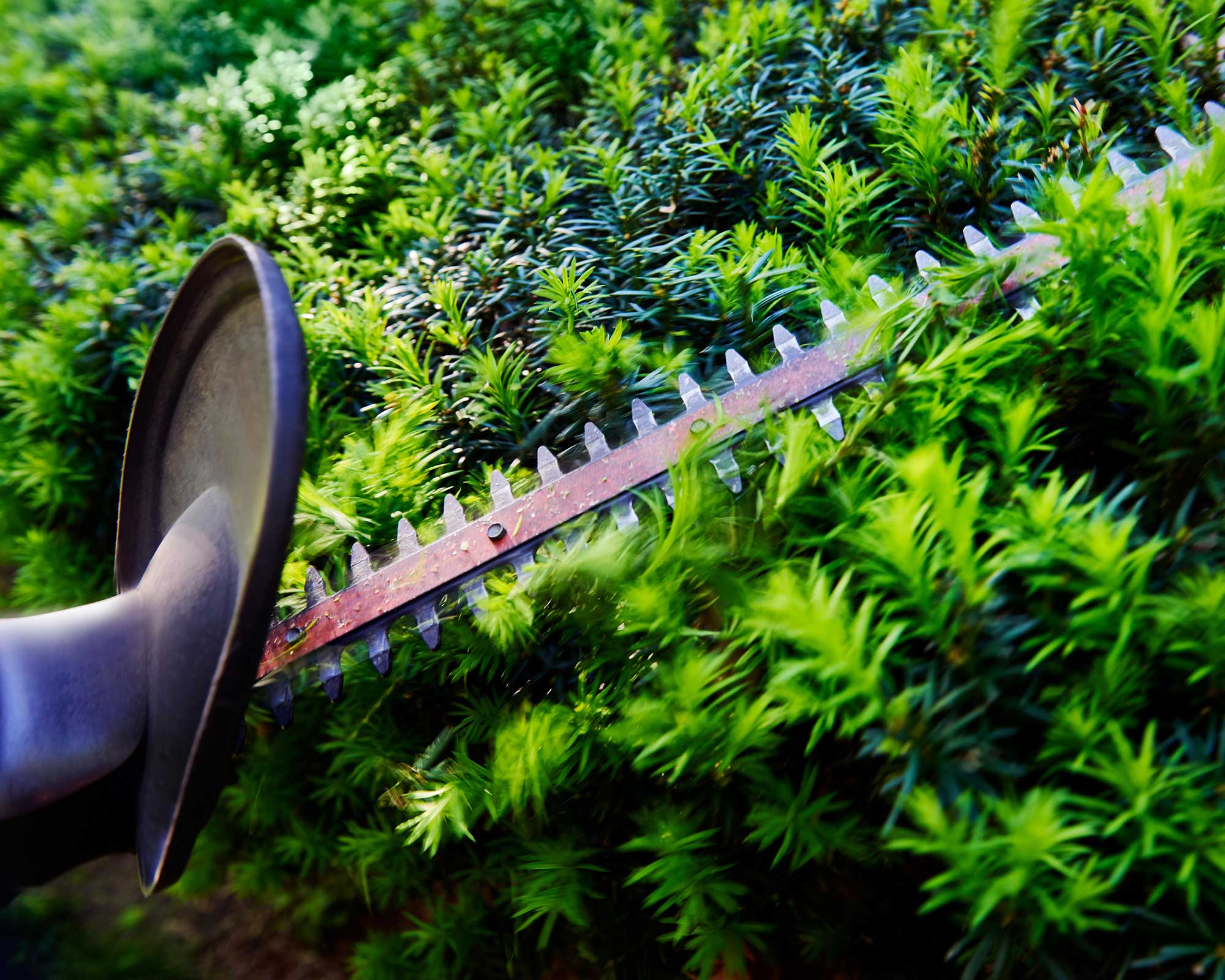
If your yew hedge has become unruly, it will tolerate a harder prune. However, if you want to reduce the size of a very overgrown hedge, it's best to do so in stages, says the RHS. Carry out the process in mid-spring over the course of three years: in the first year, reduce the top right back to at least 6in lower than the final desired height to create a dense surface; in the second year, reduce the width of one side of the hedge; and in the third year, prune the other side.
Putting a tarpaulin down first is always a good idea when learning how to trim a hedge as it will ensure an easier clean-up. For yews, it's particularly a good idea, due to the poisonous nature of the plant. It's also wise to wear gloves when handling yew, as the RHS advises.
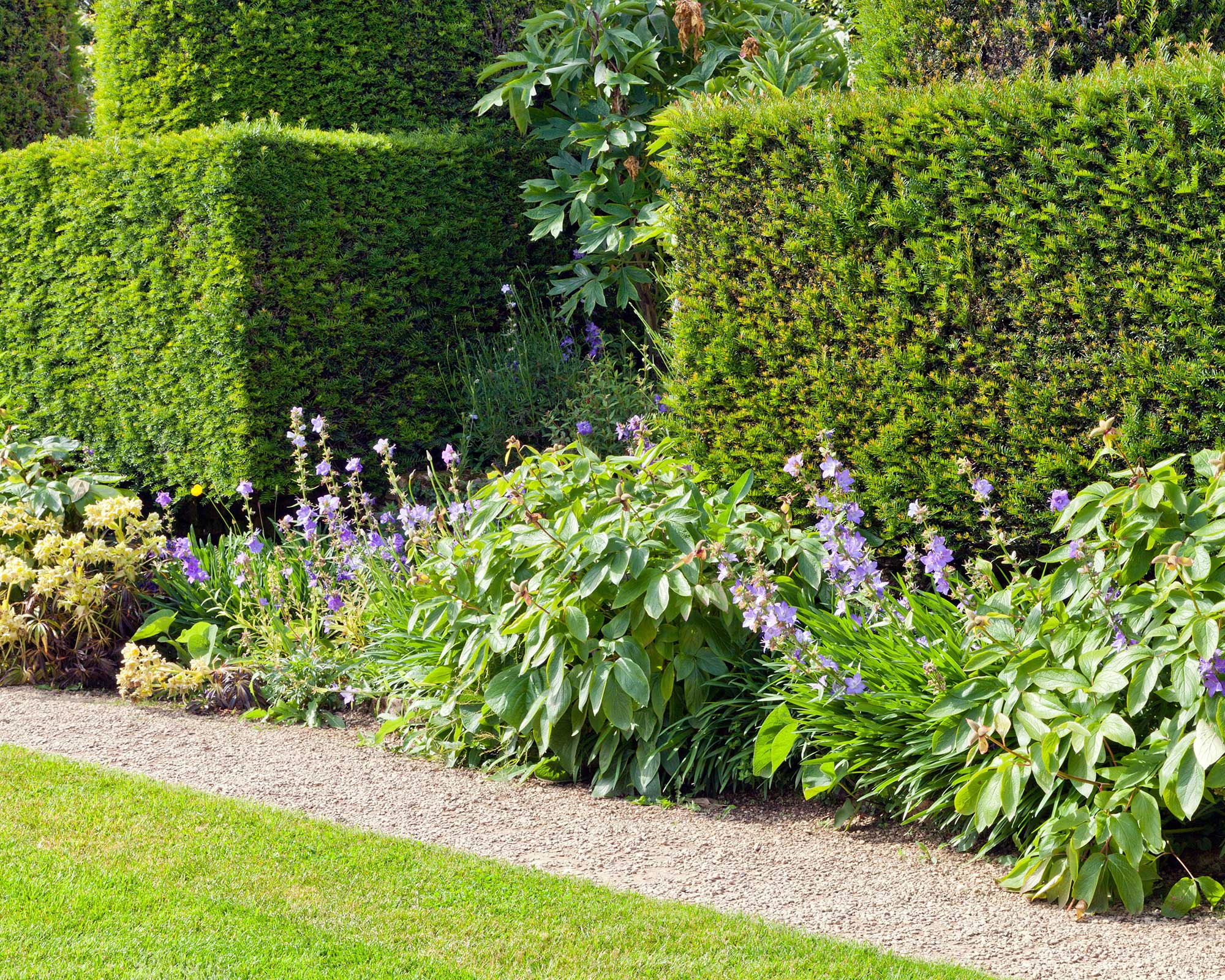
How to prune a yew to make topiary
As Ned says, yews are great trees to get creative with – you can clip them into all sorts of shapes, from modern geometric shapes to animals and Japanese-style cloud pruning forms. They are such a popular choice for topiary due to their dense foliage – as opposed to looser hedging plants like laurels, he adds.
All you need to get started is a pair of secateurs and some shears. For more detailed work, you may wish to invest in some topiary clippers, available on Amazon. Again, pruning in late summer is best, although you can also carry out the job in early summer, says the RHS.
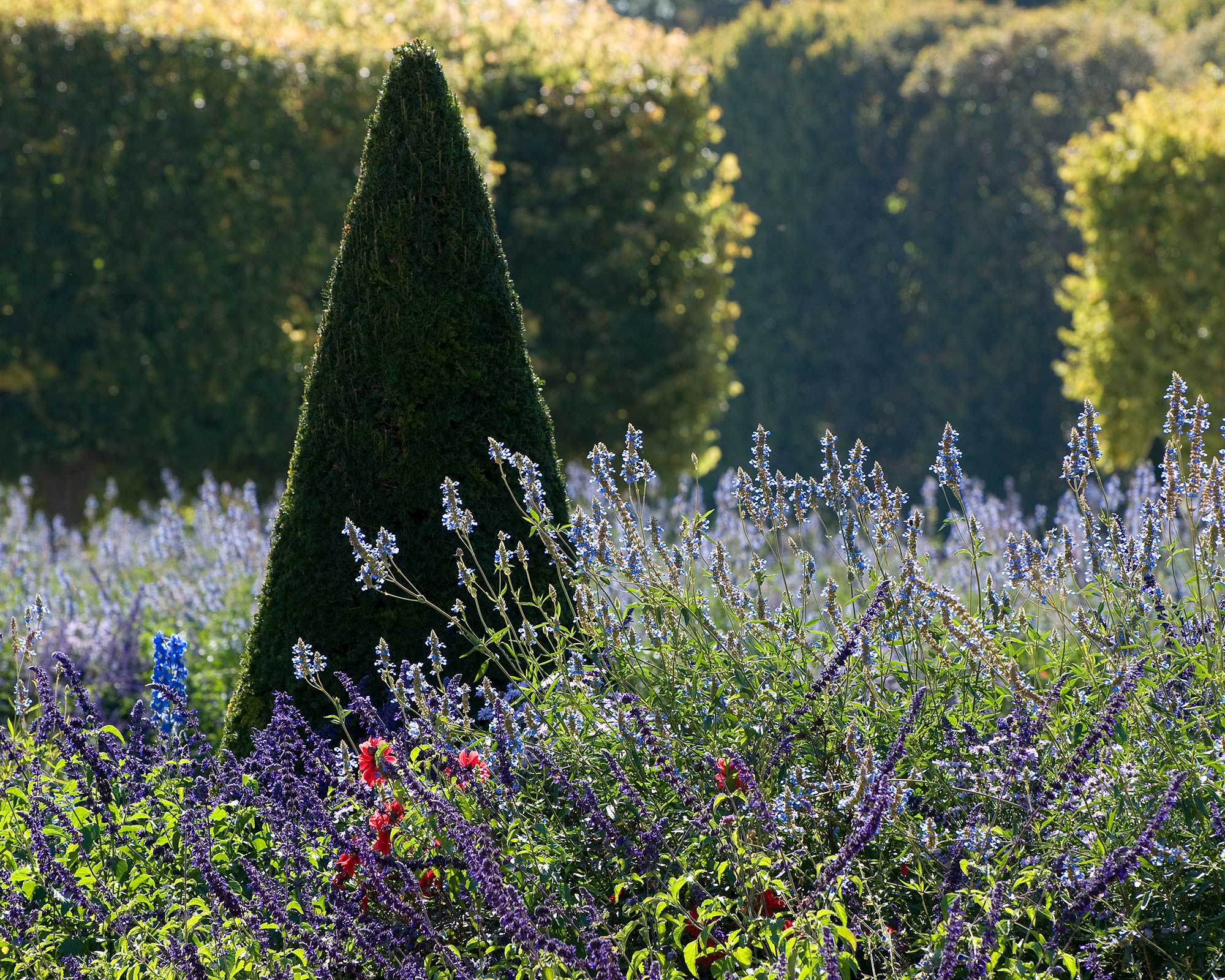
How to prune upright yews
You can get yews that are more upright in form, also known as fastigiate yews, such as Taxus baccata 'Fastigiata'. Their limbs grow more upright, resulting in a columnar shape. However, as the branches become heavier, the once-neat form can start becoming more open and drooping.
To get it back to a smart, vertical shape, the RHS advises cutting back outward growth in summer, trimming the shoots individually with secateurs rather than with a trimmer. Take each back within the foliage to hide the pruning cuts. You can also tie together the branches with twine to keep them upright.
Cut back the top of the tree annually, but only when it has reached the desired height. This should also be done in summer.
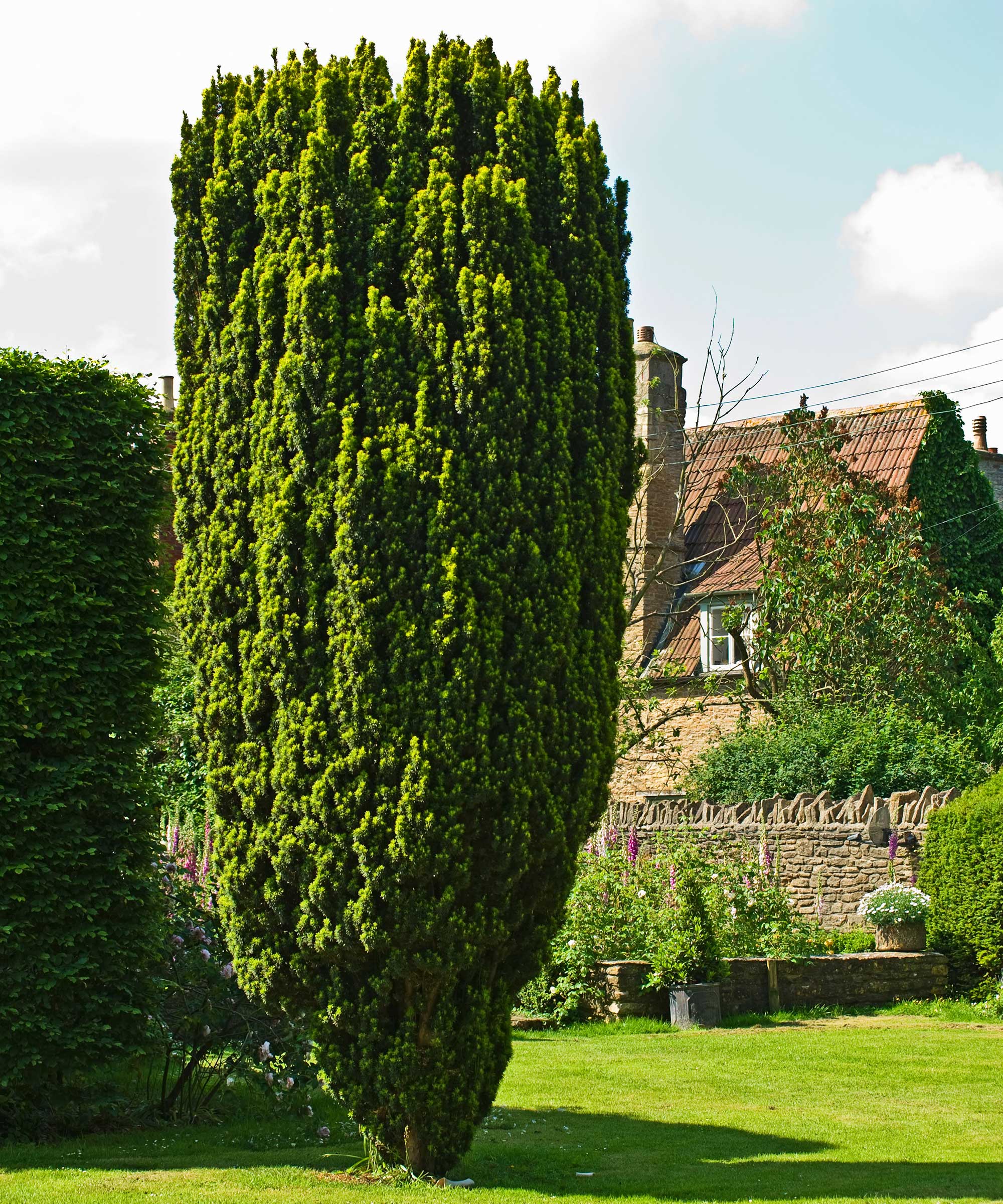
How to prune a specimen yew tree
Pruning a large yew specimen tree in your backyard isn't generally necessary. However, there may be occasions when you wish to thin the canopy out to allow more light to penetrate through. Or, perhaps there is a dead branch that you want removing, to reduce the risk of it falling on anyone.
Either way, it's always best to call in a trained arborist to carry out the work to ensure it's done safely and no harm is done to the tree. They can also inspect the tree for any pests or diseases while they are doing the job to ensure it stays in tip-top condition.
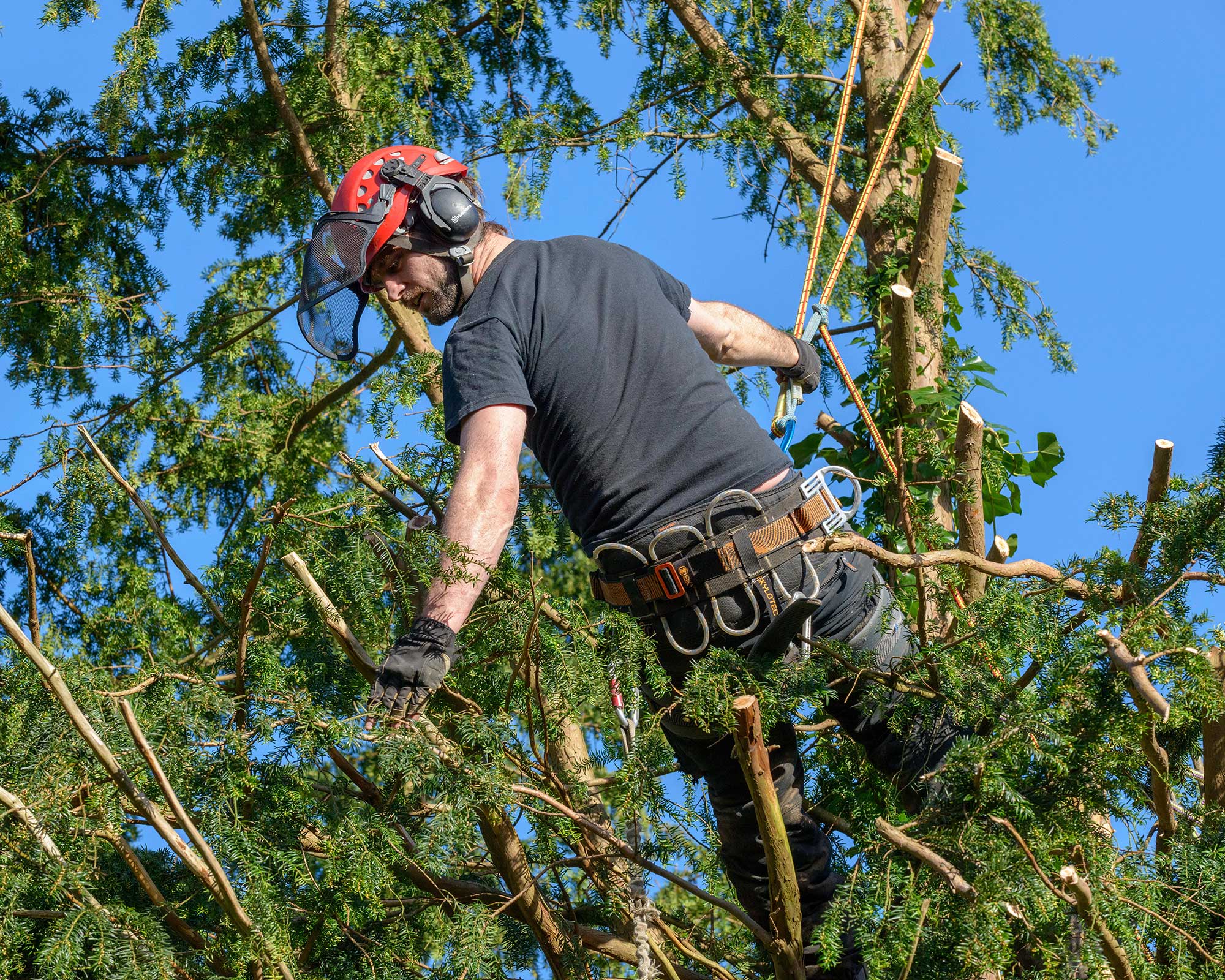

The garden was always a big part of Holly's life growing up, as was the surrounding New Forest where she lived. Her appreciation for the great outdoors has only grown since then. She's been an allotment keeper, a professional gardener, and a botanical illustrator – plants are her passion.
